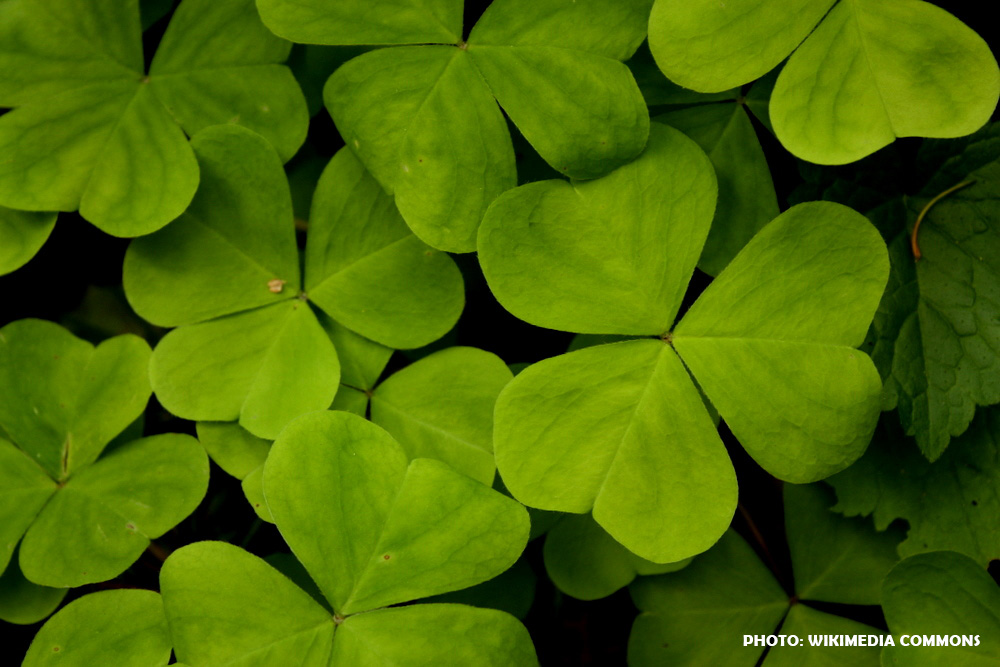Question: I have these plants with heart-shaped leaves growing in my garden. I would like to identify this plant before I spend any more time pulling it up. I have included a few photos. They are attractive but they grow in locations not to my liking. Is it a weed or a welcome addition to my garden?
Answer: Are those little heart-shaped leaves popping up in your garden a sign of a healthy ecosystem or a nuisance to be pulled? Common wood sorrel, with its delicate foliage and charming flowers, has sparked a debate among gardeners and botanists alike.
Common wood sorrel, Oxalis acetosella, is a native plant in many regions. It is a delicate and fascinating perennial herb that is often found in wooded areas, lawns, and gardens.
Common wood sorrel is easily identifiable by its heart-shaped trifoliate leaves and delicate white to pale pink flowers which bloom from spring to early summer. It thrives in moist, shaded areas, making Oregon’s diverse landscapes an ideal environment for its growth.
Gardeners may find themselves torn between appreciating its natural beauty and lamenting its invasive tendencies. Common wood sorrel spreads through underground rhizomes and by seed, quickly colonizing bare patches of soil. Its ability to thrive in various conditions, including shaded areas, further complicates the matter. Because of its prolific nature, many have labeled it as a weed.
Now, some may view it as an unwelcome intruder competing with cultivated plants for resources, but actually, its nitrogen-fixing capabilities improve soil quality, benefiting neighboring plant species. Its presence can indicate healthy soil. Plus, common wood sorrel provides nectar for pollinators.
Beyond its physical attributes, common wood sorrel has woven itself into the cultural and historical fabric of Oregon. Indigenous communities have long recognized the plant for its edible and medicinal qualities. The leaves, with their tangy flavor, were often consumed raw or used to make tea, while the plant’s high vitamin C content made it a valuable resource for preventing scurvy, particularly during long winters or expeditions.
The culinary potential of common wood sorrel is being rediscovered. All varieties of sorrel are edible and are often added to salads, sauces, and even desserts. A word of caution though — while generally harmless in small quantities, the oxalic acid may pose a concern for individuals with certain health conditions.
So…back to your question: Is it a weed or a welcome addition? Ultimately, the classification of common wood sorrel as a weed depends on individual perspectives and the context of the garden in which it grows. To decide whether common wood sorrel is a weed in your garden, consider your gardening goals and the specific ecosystem you wish to cultivate.
As more people embrace sustainable approaches to gardening, the inclusion of native and wild plants like common wood sorrel becomes a natural choice. This trend represents a departure from traditional ornamental gardening and highlights a growing awareness of the importance of supporting local biodiversity. But on the other hand, if you prioritize a manicured and uniform garden, you may opt to manage or remove this plant. Perhaps the solution lies in striking a balance, allowing some to flourish while managing its spread in designated areas.
And while you are pondering that decision, let me tell you a bit about some other commonly found sorrels in our area:
- French sorrel, Rumex scutatus, smooth, arrow-shaped leaves with a slight red tinge at the base of leaves.
- Sheep sorrel, Rumex acetosella, small, lance-shaped leaves with reddish stems and small red or green flowers.
- Common garden sorrel, Rumex acetosa, bright green arrow-shaped leaves with a slightly curly edge.
- Red veined sorrel, Rumex sanguineus, bright green leaves with vibrant red veins
So…weed or welcome addition? You decide. The decision is completely up to you with no right or wrong answer.
Originally published in The News Review | 6/21/2024

